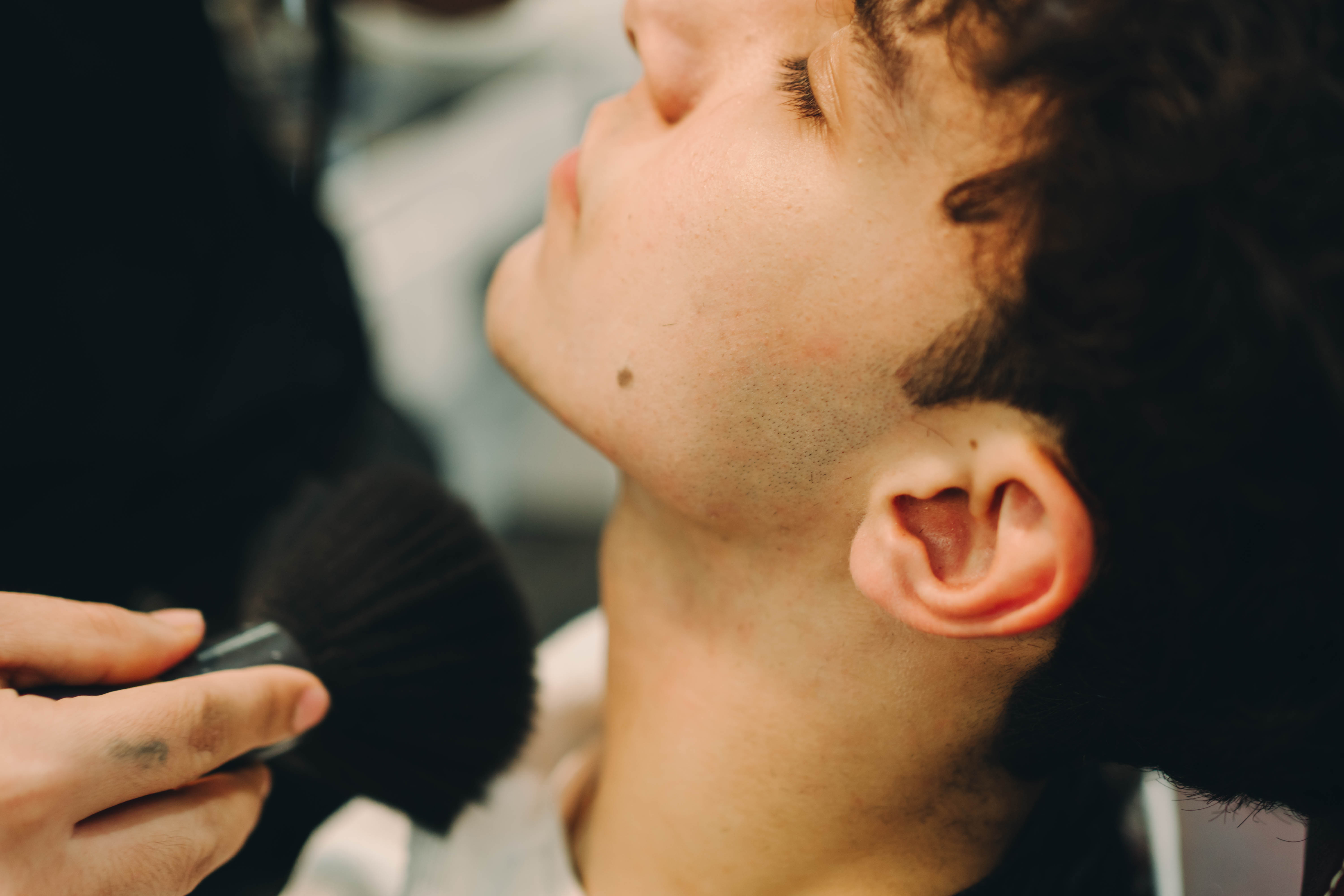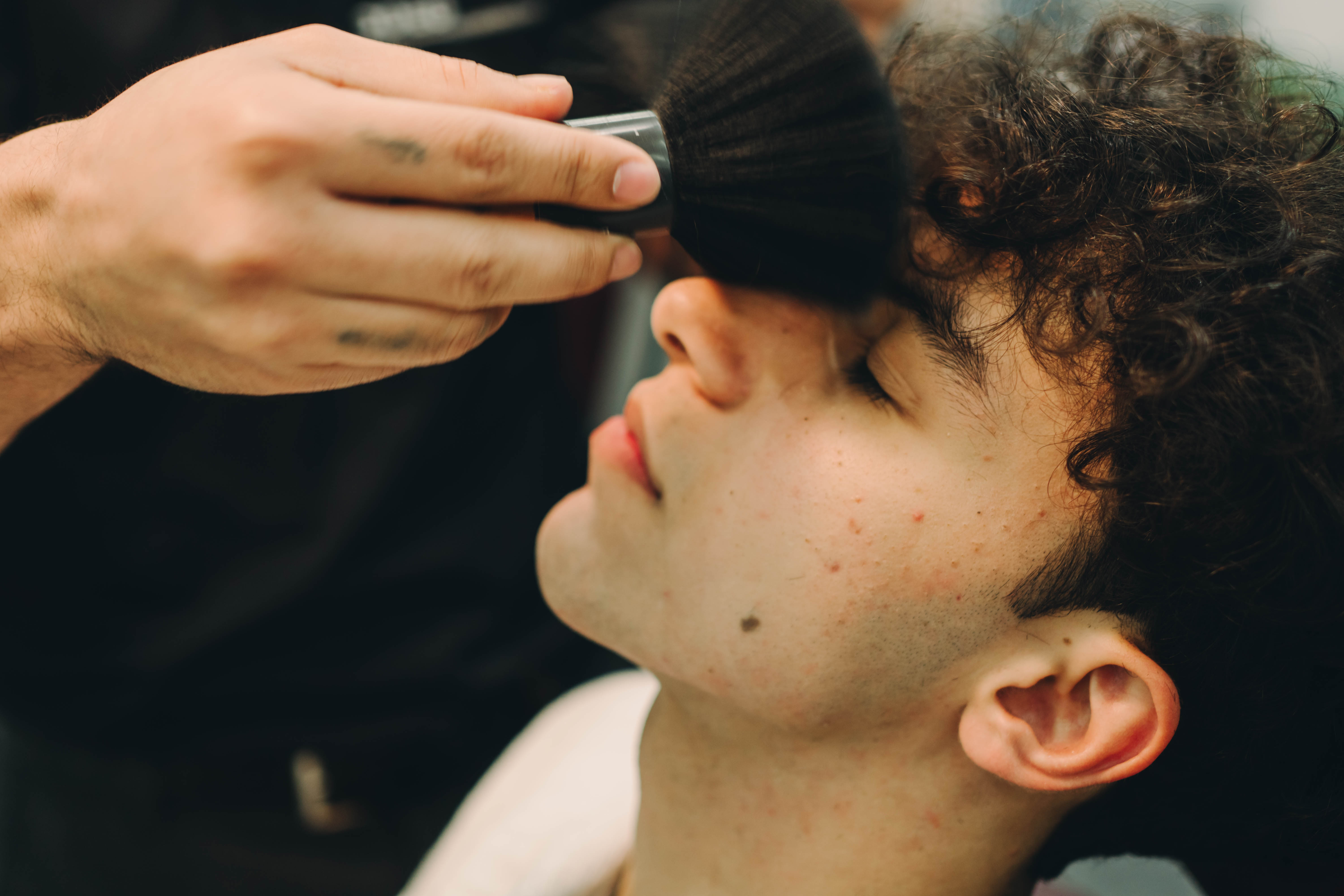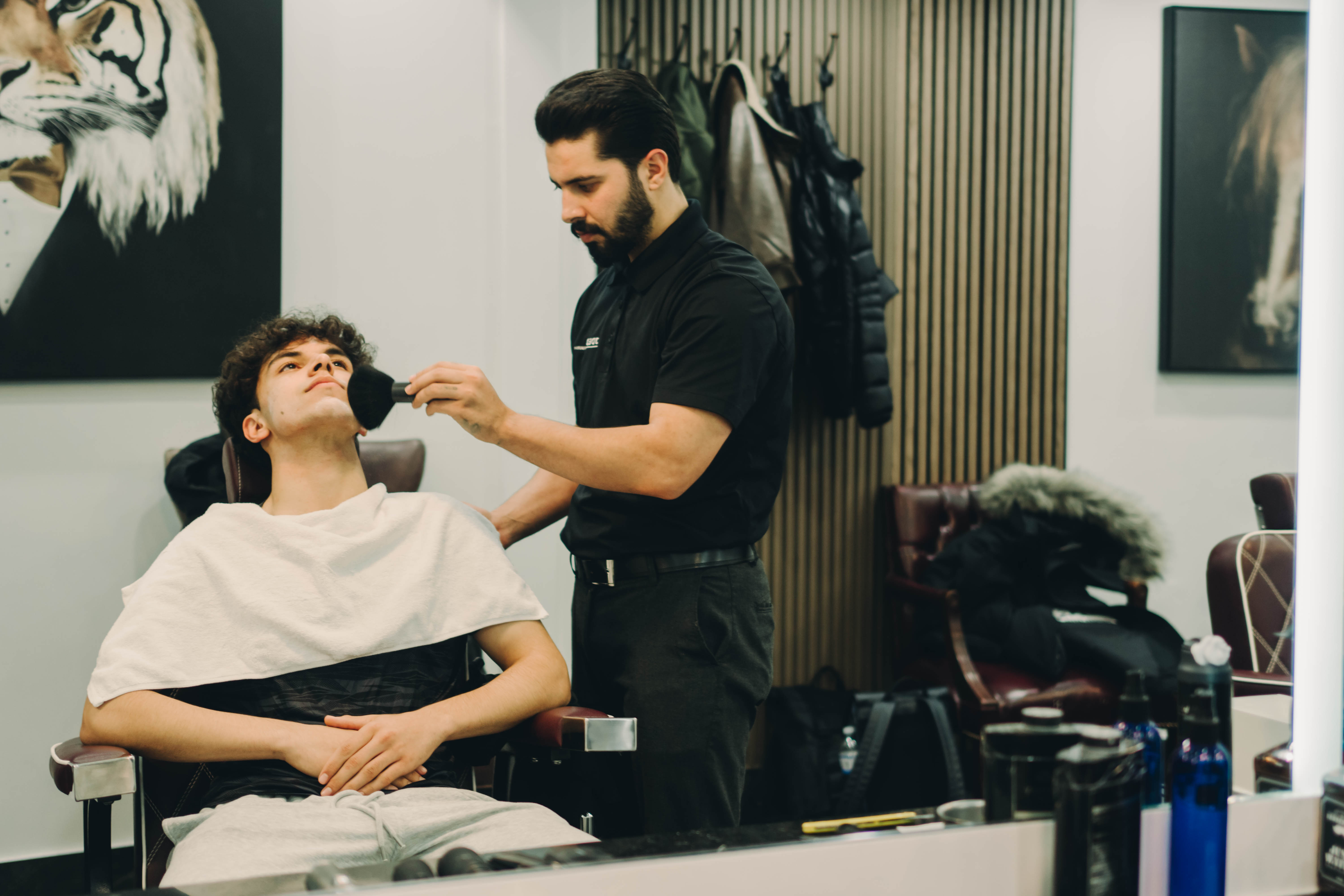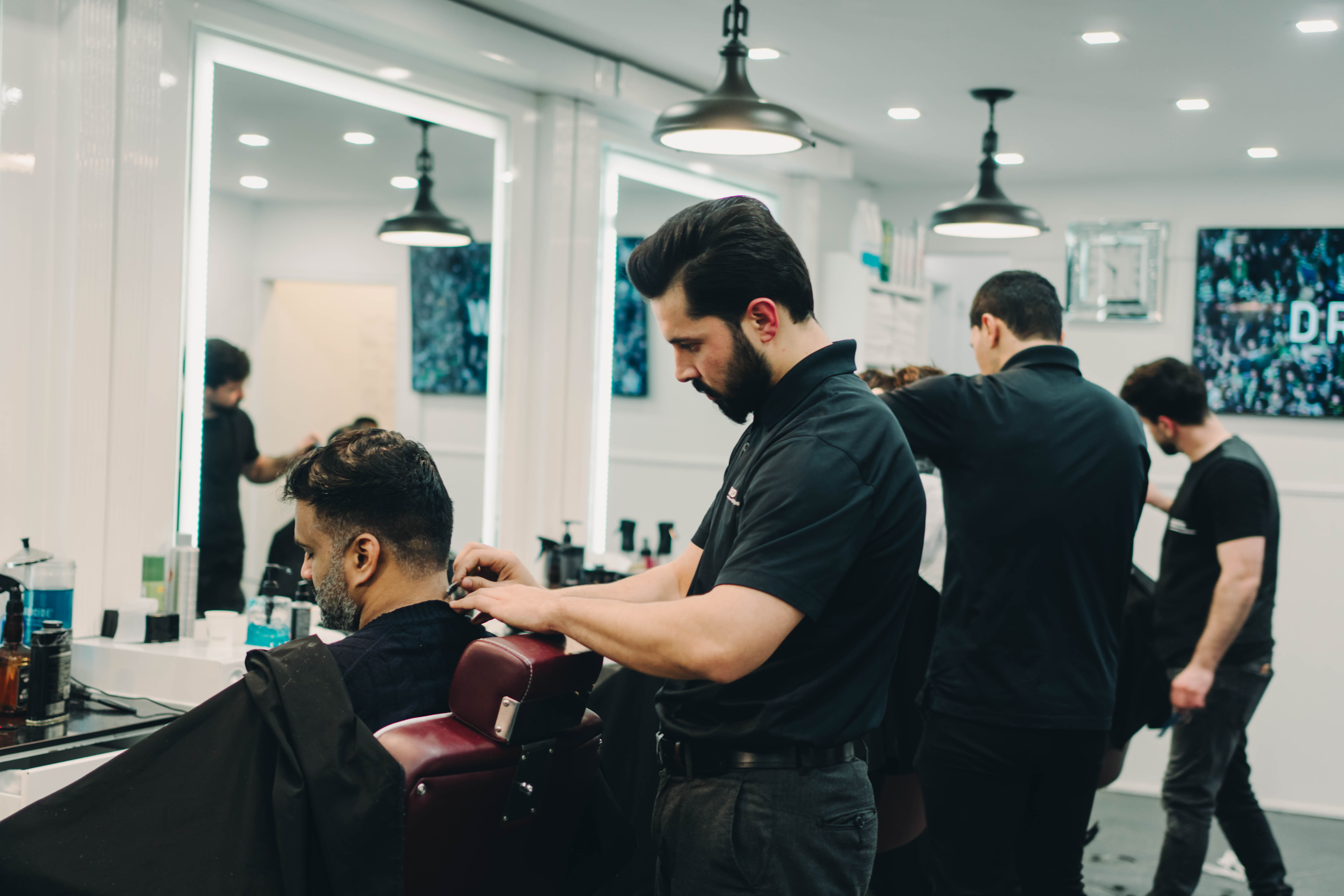Most Toronto barbers will trim your beard and send you on your way with a pat on the back and a "looks great, man." What they won't tell you is that you'll be back in two weeks looking scraggly again, wondering why your beard never looks as good as it did walking out of their chair.
Here's the truth: proper beard maintenance isn't just about the trim. It's about daily habits, the right products, seasonal adjustments, and understanding how your specific beard grows. Most barbers either don't know this information or don't want to spend the time teaching it because educated clients need fewer appointments.
At Jded Barbershop, we believe the opposite. An informed client with a great-looking beard is walking advertising for our work. Here's everything most Toronto barbers keep to themselves about beard maintenance.
Your Beard Has Growth Zones (And Most Barbers Ignore Them)
Every beard grows differently. Some guys get thick coverage on their chin but struggle with cheek growth. Others have strong sideburn connection but weak mustache growth. Your neck hair might grow fast and coarse while your cheek hair stays fine and slow-growing.
Most barbers treat all facial hair the same way – they trim everything to one length and call it done. This creates an uneven look because different zones of your beard have different growth rates and textures.
The secret is mapping your growth zones and trimming each area according to its specific needs. Fast-growing areas need more frequent attention. Sparse areas might need to be kept slightly longer to create the illusion of thickness. Areas with multiple growth directions need special cutting techniques to prevent the "pushed down" look.
At Jded, we spend time during your first beard service identifying these zones. We make notes about which areas grow fastest, where you have cowlicks or growth patterns that need special attention, and which parts of your beard respond best to different trimming techniques.
This information becomes your beard roadmap. Instead of guessing every time you come in, we have a plan specific to how your facial hair actually behaves.
The Product Game Most Shops Won't Explain
Walk into most barbershops and they'll try to sell you beard oil. That's it. One product for every beard problem, every beard type, and every Toronto season.
Here's what they don't tell you: beard oil is just one piece of a proper maintenance routine. Depending on your beard length, skin type, and lifestyle, you might need beard wash, leave-in conditioner, styling balm, or finishing products that most barbers never mention.
More importantly, the timing and application method matter as much as the product itself. Apply beard oil to a completely dry beard and it mostly sits on the surface. Apply it to slightly damp hair and it penetrates better. Use too much and you look greasy. Use too little and you get no benefit.
Different beard lengths need different approaches. Short beards (less than half an inch) need products that focus more on skin health underneath. Medium beards need moisture and light styling support. Longer beards need products that can penetrate through multiple layers of hair and provide stronger hold.
Toronto's weather adds another layer of complexity. Humid summers require lighter products that won't weigh your beard down. Dry winters need heavier moisturizing formulas. Spring and fall need versatile products that can handle temperature swings.
Most barbers sell you one bottle of oil and hope you figure it out. We take time to explain which products work for your specific beard at its current length, and how to adjust your routine as it grows or as seasons change.
The Home Maintenance Schedule They Hope You Don't Learn
Here's the biggest secret: most of your beard maintenance happens at home, not in the barbershop chair. A good barber creates the foundation and teaches you how to maintain it. A mediocre barber keeps you dependent on frequent appointments.
Your daily routine should include proper washing (not with regular shampoo), conditioning, and styling. This isn't complicated, but it does require consistency and the right techniques.
Weekly maintenance includes detailed brushing with proper tools, checking for ingrown hairs, and trimming any obviously stray hairs. This is where most guys fail – they ignore their beard all week then expect magic to happen during their monthly barbershop visit.
The tools matter too. Most guys try to maintain their beard with whatever scissors they found in their bathroom drawer and a plastic comb from the pharmacy. Professional results require proper tools: sharp trimming scissors, a quality beard brush, and trimming guides that match your desired length.
At Jded, we don't just trim your beard – we teach you how to maintain the shape between visits. We show you which areas to trim yourself and which to leave for professional attention. We demonstrate proper brushing techniques and explain how to spot problems early.
This education means you look good every day, not just on haircut day. It also means your professional trims last longer and look better because we're working with well-maintained facial hair instead of trying to fix weeks of neglect.
Why Your Neckline Keeps Looking Wrong
The neckline is where most DIY beard maintenance goes wrong, and it's also where many barbers take shortcuts that create long-term problems.
Your neckline should follow the natural curve of your jaw, sitting about one finger width above your Adam's apple. Too high and you look like you have no chin. Too low and you look unkempt. The curve should be gradual, not a harsh straight line.
Most guys try to trim their own necklines and end up going too high, creating an unnatural-looking curve that takes weeks to fix. They do this because they can't see the angles properly in their bathroom mirror, and they don't understand how the neckline should connect to the rest of their beard.
Some barbers create the same problem by rushing through neckline trims. They use clippers to create a hard line that looks sharp immediately after the cut but grows out awkwardly. A properly cut neckline should have some graduation so it looks natural as it grows.
The maintenance schedule for necklines is also different from the rest of your beard. Neck hair typically grows faster and coarser than cheek hair. You might need neckline touch-ups every two weeks even if the rest of your beard can go a month between professional trims.
At Jded, we teach clients how to identify when their neckline needs attention and how to do basic maintenance without screwing up the shape. We also explain the visual tricks that make necklines look natural and flattering for different face shapes.
Toronto Weather Is Sabotaging Your Beard (And How to Fight Back)
Toronto's weather puts facial hair through extremes that most barbers don't account for. Humid summers make beards frizzy and unmanageable. Dry winters leave them brittle and static-filled. Temperature swings between heated indoors and cold outdoors stress both your facial hair and the skin underneath.
Summer beard maintenance in Toronto requires products and techniques that control frizz without weighing your beard down. You need lighter oils, stronger brushing routines, and styles that can handle some humidity-induced chaos.
Winter creates different problems. Indoor heating dries out your skin and hair. Scarves and high collars compress your beard and create weird growth patterns. Cold wind makes facial hair brittle and prone to breakage.
Most barbers use the same techniques year-round and wonder why their clients' beards look great in some seasons but terrible in others. Smart beard maintenance adapts to Toronto's climate challenges.
This means seasonal product switches, adjusted trimming schedules, and style modifications that work with weather patterns instead of against them. Your October beard maintenance routine should be different from your February routine.
The Length Transition Problem Nobody Talks About
Growing a beard isn't just about not shaving. Different lengths require completely different maintenance approaches, and the transition periods between lengths are when most guys give up or end up with terrible-looking facial hair.
The first month is all about skin care and fighting the itch that makes most guys quit. Months two through four are about managing awkward growth patterns and training your beard to grow in the right directions. After that, it's about maintaining shape and health.
Each stage requires different products, different trimming schedules, and different styling approaches. What works for a three-week beard will sabotage a three-month beard.
Most barbers either specialize in short beards or long beards, but few understand how to guide clients through the transition periods. This leads to guys getting frustrated during the awkward growth phases and either shaving everything off or walking around looking unkempt for months.
At Jded, we create growth plans that account for these transition periods. We adjust our trimming approach as your beard evolves, and we prepare you for what each stage will require from your maintenance routine.
Master Your Beard Maintenance
Most Toronto barbers keep you in the dark about proper beard care because frequent touch-ups mean more money. But a well-maintained beard that looks great every day is better advertising for their work than a client who needs constant fixes.
The truth is, once you understand your beard's growth patterns, the right products for Toronto's climate, and proper daily maintenance, you'll spend less time and money while looking significantly better.
Ready to learn what your barber should have been teaching you? Book your appointment at Jded Barbershops and discover what proper maintenance can do for your style.




.avif)




